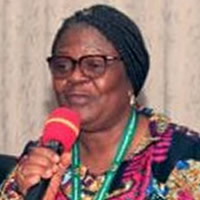The region lies in the southern half of the country and occupies 24,389 sq. km. or 10.2 percent of the total land area of Ghana. It is the third largest region after the Northern and Brong Ahafo regions, respectively. It shares boundaries with the Western, Central, Eastern and Brong Ahafo regions.
The more or less central location of the region is strategic for transportation and distribution networks for goods and services in the country and beyond. More than half of the region, the south-western part, lies in the semi-equatorial forest zone and a smaller north-eastern part lies in the savanna zone. The region has an average annual rainfall of 1,270 mm and two rainy seasons; the major season is from April to mid-August and the minor season is from September to November. The period December to March and mid-August to mid-September is relatively dry.
The average daily temperature is about 27 degrees Celsius. The climatic conditions of the region permit successful cultivation of many annual and tree crops, but are unsuitable for keeping cattle due to the prevalence of trypanosomiasis (or sleeping sickness), the disease caused by the tsetse fly, and inadequate grass vegetation for feeding. The region is endowed with a spectacular geography that includes lakes, waterfalls, scarps, forest reserves, national parks, birds and wildlife sanctuaries, such as Owabi Arboretum and Bomgobiri.
The region is drained by Lake Bosumtwi (the largest natural lake in the country) and many rivers such as Offin, Pra, Afram and Owabi which serve as sources of drinking water for residents of many localities in the region
Date Created : 11/27/2017 4:02:45 AM





 facebook
facebook twitter
twitter Youtube
Youtube TOLL FREE 0800 430 430
TOLL FREE 0800 430 430 +233 593 831 280
+233 593 831 280 GPS: GE-231-4383
GPS: GE-231-4383 info@ghanadistricts.com
info@ghanadistricts.com Box GP1044, Accra, Ghana
Box GP1044, Accra, Ghana